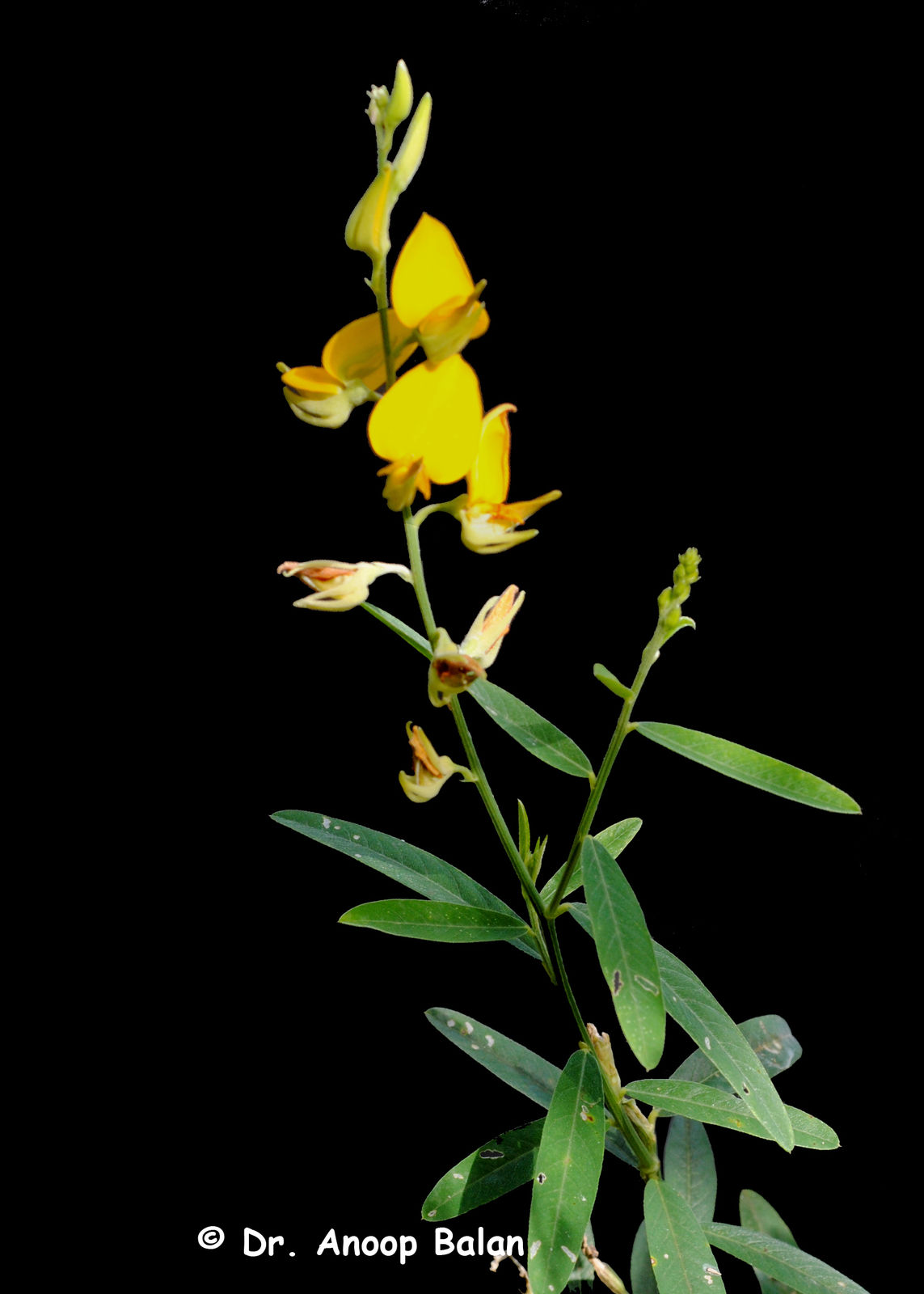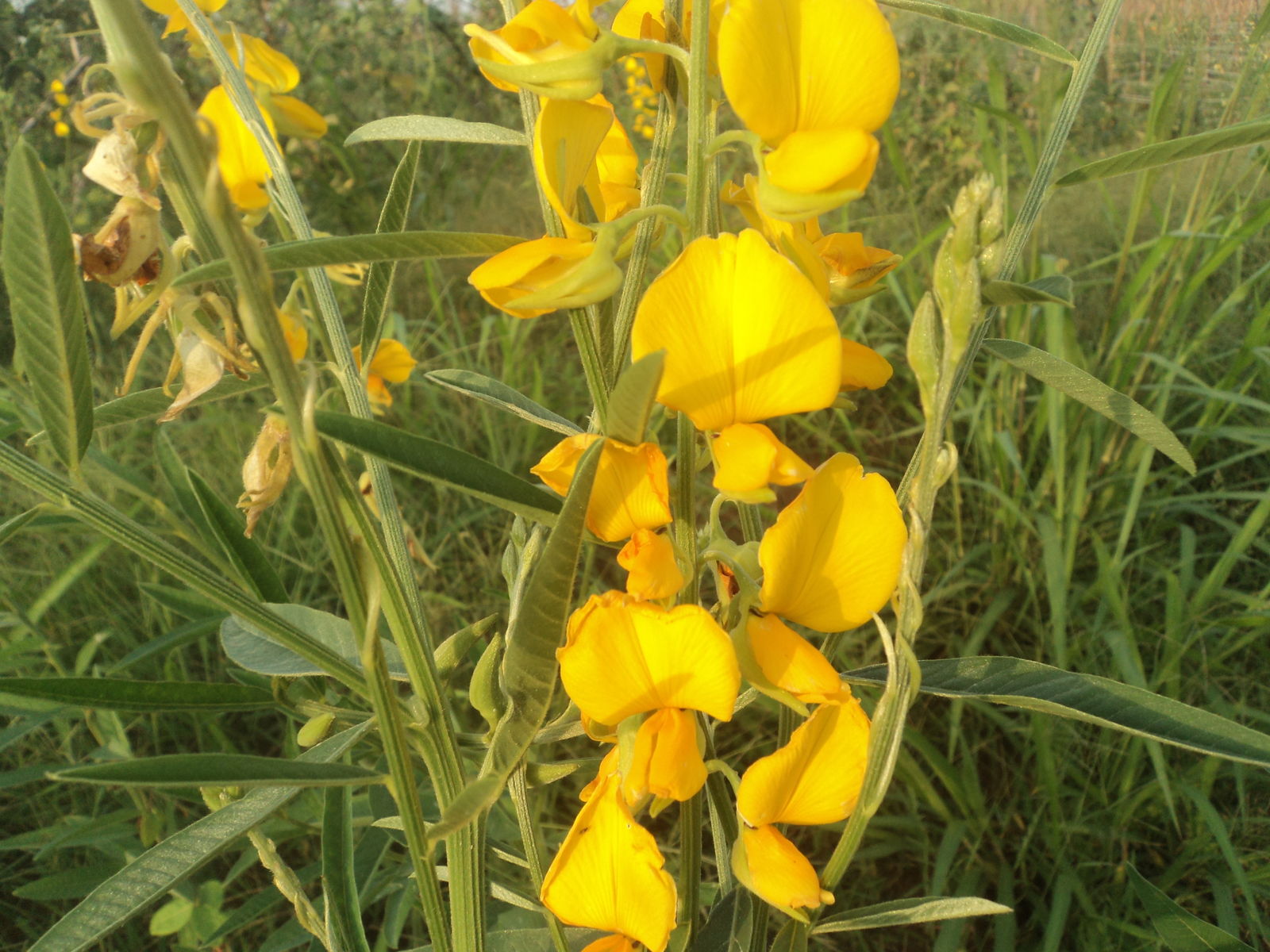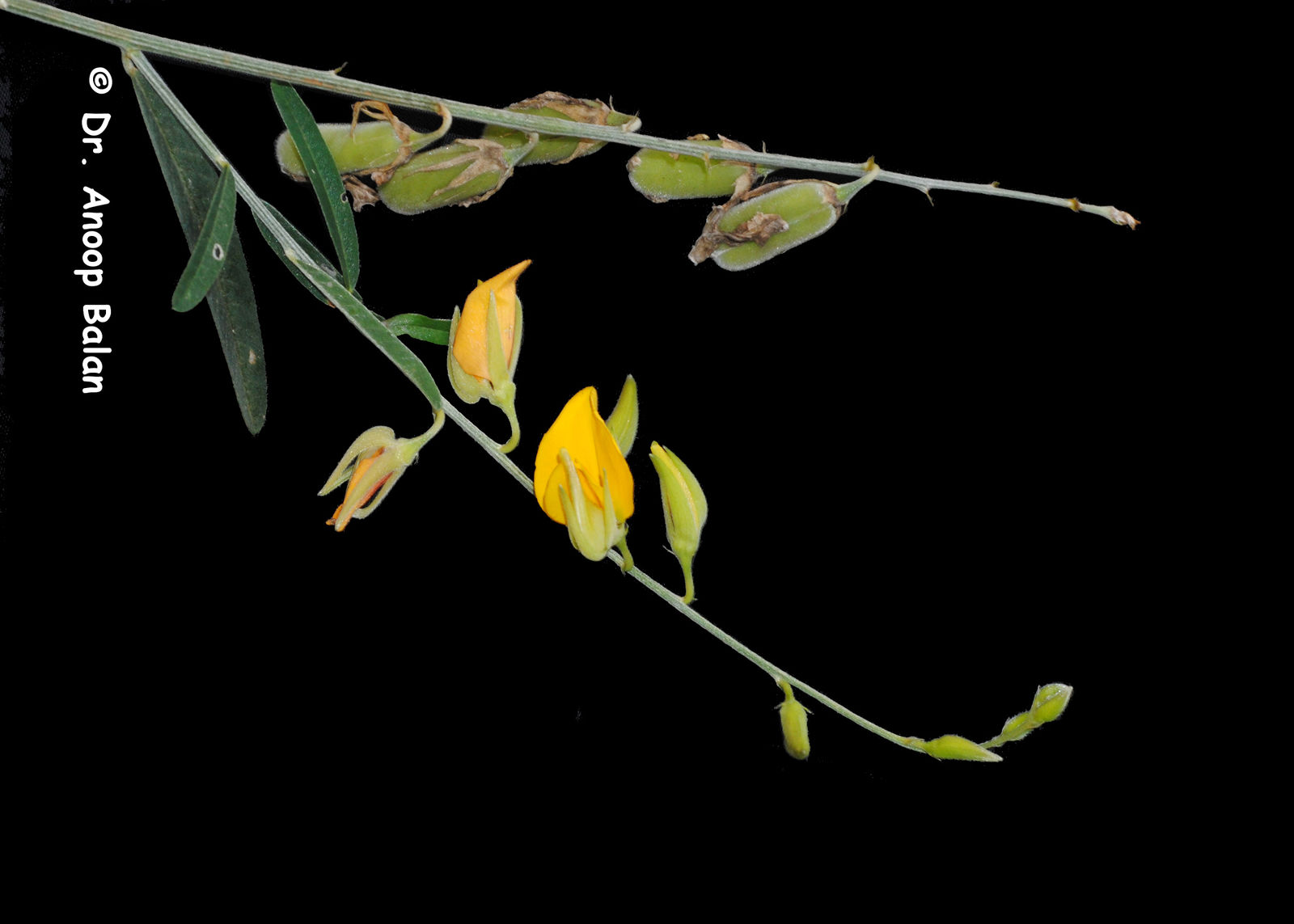Sunn hemp
crotalaria juncea
Also known as: ["Sunn hemp","Sunnhemp"]
Overview
An annual legume known for its rapid growth and use as a green manure crop, fiber source, and cover crop.
Benefits & Perks
["fast growing","drought tolerant","wildlife attractant (bees, butterflies, birds)"]
Botanical Classification
| Phylum: | Magnoliophyta |
| Class: | Magnoliopsida |
| Order: | Fabales |
| Family: | Fabaceae |
| Genus: | Crotalaria |
| Botanical Name: | Crotalaria juncea |
Plant Characteristics
Basic Information
- Category: Herbs & Weeds
- Suitable Location: outdoor garden bed in full sun exposure
- Suitable For:
- Is Weed: No
- Allergenicity: low
Environmental Needs
- Climate: {"temperatureRange":"15–35°C"}
- Hardiness: {"zones":"8–11"}
- Misting: rarely required, only if ambient humidity is very low
- Drainage: Fast-draining to prevent waterlogging.
- Soil Type: Well-draining, loamy soil with added organic matter; can tolerate sandy soils if amended.
Maintenance Level
- Maintenance Level: low
- Toughness Level: high
- Pruning Frequency: Light pruning can be done as needed; major pruning in late winter or early spring before new growth begins.
- Pruning Intensity: Moderate; remove up to one-third of the plant if overgrown, but avoid heavy pruning during flowering
Care Details
Ideal Sunlight Coverage:
Full sun (6–8 hours of direct sunlight daily); tolerates partial shade but may produce fewer flowers.
Sunlight Tolerance Tips:
Acclimate plants gradually to intense sunlight if moved from shade; protect from harsh midday sun in hot climates; ensure good air circulation to prevent leaf scorch.
Care Requirements
Care Difficulty
easymoderate
Sunlight
full sun
Rotate plant weekly for even growth; use shade cloth in extreme heat; avoid placing in drafty areas.
Watering
every 7–10 days during active growth, less frequently in dormant periods
Water thoroughly but infrequently; ensure soil dries between waterings; avoid overhead watering to prevent fungal issues.
Soil
well-drained, loamy soil with moderate organic content
pH: Slightly acidic to neutral (pH 6.0–7.0).
Avoid heavy clay soils; ensure pots have drainage holes; topdress with compost annually.
Temperature
Warm temperatures (65–85°F or 18–29°C); prefers stable conditions; sensitive to frost.
Avoid sudden temperature changes; protect from frost; maintain consistent warmth during active growth.
Fertilizing
every 4–6 weeks during growing season with balanced fertilizer
Apply fertilizer after watering to prevent root burn; flush soil occasionally to prevent salt buildup; reduce frequency in dormant periods.
Propagation
Methods
Stem cuttings or seed; stem cuttings root easily in warm conditions.
Step-by-Step Propagation Guide
- Take 4–6 inch cuttings.
- Remove lower leaves.
- Dip in rooting hormone.
- Plant in moist medium.
- Maintain humidity.
Best Time: Spring or early summer when plant is actively growing.
Environment
Warm (70–75°F or 21–24°C), humid, and bright indirect light; protect from direct sun.
Medium
Well-draining mix of perlite and peat moss or cactus mix.
Hormone
Rooting hormone is recommended for faster and more reliable rooting.
Timeline
Roots develop in 2–4 weeks; new growth appears in 6–8 weeks.
Tools Needed
Pruning shears, rooting hormone, small pots, well-draining medium, plastic wrap or propagator.
Quick Tips
Use healthy, non-flowering stems; keep medium consistently moist but not waterlogged; provide bottom heat if possible.
Pruning & Repotting
Pruning Guide
Method
Use clean cuts just above a leaf node or bud; remove crossing or crowded branches to improve air circulation.
Pruning Plan
Prune to maintain shape, encourage bushier growth, and remove dead or diseased parts.
Tools
Pruning shears, sterilizing solution, gloves.
Checklist
Sterilize tools; prune during dormancy; remove dead/diseased parts; shape plant evenly; clean up debris.
Repotting Guide
Best Season
Early spring before active growth begins.
Pot Size
Increase pot size by 1–2 inches in diameter; ensure good drainage holes.
Method
Remove plant gently; trim any circling roots; place in a slightly larger pot with fresh soil; water thoroughly after repotting.
Suggestions
Repot every 2–3 years or when roots fill the pot; beneficial for younger plants to encourage growth.
Checklist
Choose appropriate pot size; prepare fresh soil mix; handle roots carefully; water after repotting; place in appropriate light.
Advanced Care Tips
Watering Mastery
Watering Checklist
Check soil moisture before watering; water deeply at the base; ensure proper drainage; adjust frequency based on season.
How to Apply Water Properly
Water at the base of the plant, targeting the root zone; ensure water penetrates deeply to encourage deep root growth; allow excess water to drain away to prevent waterlogging.
Watering Schedule Tips
Water deeply once the top inch of soil feels dry; reduce frequency in winter to prevent root rot.
Soil Improvement
Add compost or well-rotted manure for fertility; mix in perlite or sand for drainage; ensure soil is loose and airy.
Temperature Stress Management
Signs of Temperature Issues
Yellowing leaves, stunted growth, bud drop, or leaf burn in extreme heat or cold.
Cold Stress
Low temperatures slow growth and can cause leaf drop; prolonged cold may lead to root damage or death.
Solution: Move to a warmer location; provide frost protection in cold climates; avoid overwatering during cold periods.
Hot Stress
Excessive heat can cause wilting, leaf scorch, or reduced flowering; may drop leaves to conserve water.
Solution: Provide afternoon shade; increase watering frequency; use mulch to retain soil moisture; ensure good air circulation.
Fertilizing Guide
Fertilizing Checklist
Use diluted fertilizer; apply during active growth; avoid winter feeding; flush soil periodically.
Fertilizing Method
Use balanced liquid fertilizer diluted to half strength every 4–6 weeks during growing season (spring/summer); avoid fertilizing in winter.
Common Problems & Solutions
Toxicity Warning
Cats
ToxicCrotalaria juncea is toxic to cats due to its pyrrolizidine alkaloid content, which can lead to severe liver damage and failure.
⚠️ Symptoms:
🌿 Toxic Parts:
⚡ Toxic If:
if eaten
Dogs
ToxicThe pyrrolizidine alkaloids in Crotalaria juncea are toxic to dogs, causing liver damage and potential liver failure upon ingestion.
⚠️ Symptoms:
🌿 Toxic Parts:
⚡ Toxic If:
if eaten
Humans
ToxicCrotalaria juncea contains pyrrolizidine alkaloids, which are hepatotoxic and can cause liver damage upon ingestion. Chronic exposure may lead to severe liver fibrosis and cirrhosis.
⚠️ Symptoms:
🌿 Toxic Parts:
⚡ Toxic If:
if eaten
Frequently Asked Questions
Q: Is Sunn hemp toxic to humans?
A: Yes, Crotalaria juncea is toxic to humans if ingested.
Q: What are the uses of Sunn hemp?
A: It is used as a green manure crop, for fiber production, and as a cover crop to improve soil health.
Q: How easy is it to grow Sunn hemp?
A: It is relatively easy to grow, requiring minimal maintenance and thriving in drought conditions.
Quick Reference
| Family: | Fabaceae |
| Care: | easy |
| Light: | full sun |
| Water: | every 7–10 days during activ |
Get Expert Care Tips
Download the Plantious app for personalized care reminders and plant identification!
Google Play App Store








